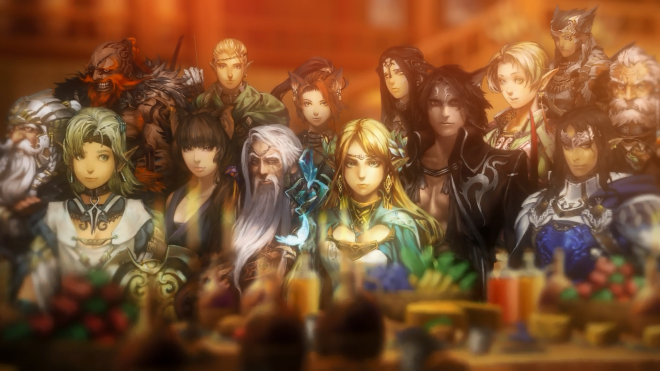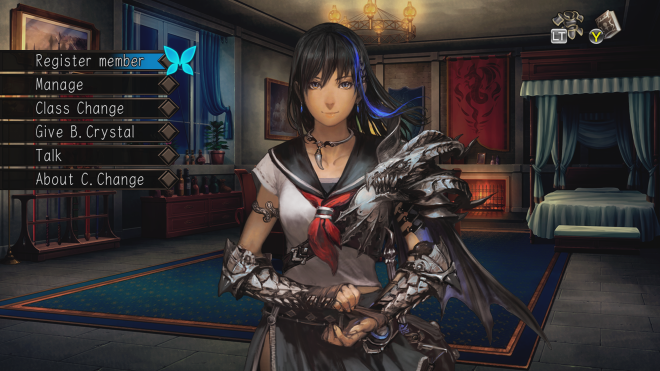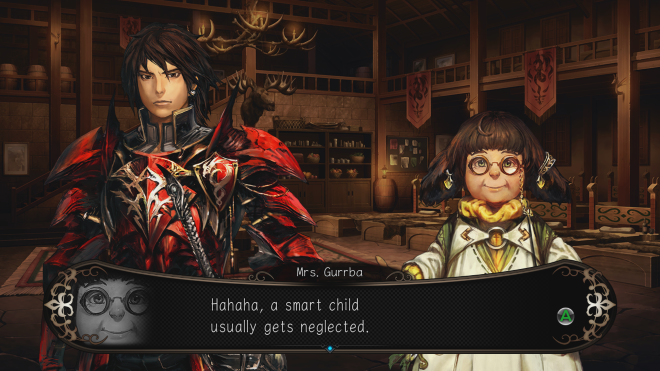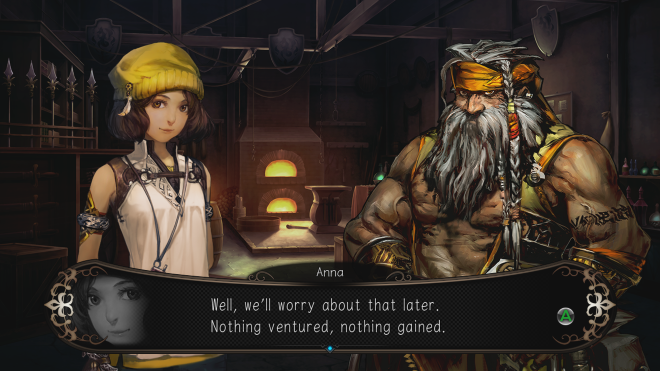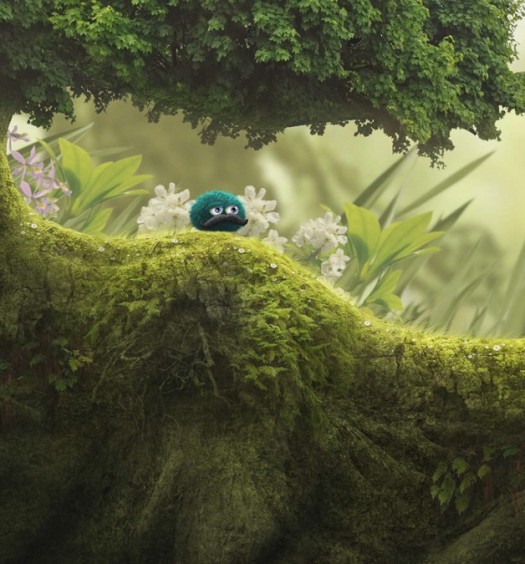It all starts with a plane crash. The protagonist comes back to consciousness and finds they are in a ruin full of sand and a an aching body. You’re asked which difficulty to play on, and the character creation process begins. After a creepy elderly man lets the protagonist know they were the sole survivor of the crash, Stranger of Sword City tasks players with finding their way out of the dungeon they’ve landed in. It’s time for the player to find their way to Escario, Sword City and find out what it means to be a “stranger” with magic powers.
Before we do a deep dive into Stranger of Sword City, let’s preface things with a note regarding the game’s history. The original release was on the Xbox 360 and Windows in Japan as Stranger of Sword City: The White Palace. After the initial release, a patch tied to a contest for 360 and Windows added a brand new zone, more enemies, new bosses, new character portraits and around 100 new items. When the PlayStation Vita’s Stranger of Sword City: The Black Palace followed, it included everything from the v1.1 patch and with a few additional changes like online rankings for over 40 categories. Stranger of Sword City for Xbox One is a remaster of the Xbox 360 game with the content of the v1.1 patch and some of the Vita version features like online rankings. While this is the first time this game is playable in English for the West, this review takes into consideration that this is also a remaster of a game released nearly a year ago in Japan.
Here’s what I liked:
Fantastic artwork — Stranger of Sword City was inspired by ’90s series like Wizardry and Might & Magic. While the original release only had the beautiful, vintage high-fantasy style NPC artwork from artist Yoko Tsukamoto. For those who want a more “modern” style, Experience has also added a new anime style illustrated by artist Oxyjiyen, and players can choose from either style for NPCs. When you create your protagonist and register additional characters, you’ll have access to character portraits from both artists. Battle scenes, conversation scene backdrops and environmental backgrounds all have a high-fantasy look to them that doesn’t change regardless of NPC illustrations. I spent most of my time with the classic art style, and it made the game feel like a wonderful trip back in time.
Character creation and management — The character creation tool feels like a game of Dungeons and Dragons with a character sheet. Name, race, age, class, talent and bonus stat points are all components to creating a new character. The bonus stat points take a cue from pen-and-paper RPGs with a virtual stat roll; the player may re-roll to their heart’s content if they want to try and get the highest bonuses possible. But Stranger of Sword City also takes cues from video game RPGs in that it allows you to change classes and take some of the previous class’ skills with the character making class changes. This allows you to think ahead about possibilities like a mage who can use bows, a knight who has experience casting cleric spells and seemingly infinite other variations. The additional characters that reside at the home base when they are not in the active party do gain experience, albeit at a slower rate, but this allows you to slowly set up alternate characters should a party member be downed.
Fantastic musical score — Composer Naoaki Jinbo sets the mood beautifully. A party ambush has the feel of despair and creates a sense of urgency when faced with being caught in an unfavorable situation thanks to a dramatic musical number. Peaceful towns have music that that allows the player to be at ease while talking with NPCs. Music is just as important as the setting in an RPG; it gives the player a sense of immersion into the game’s world. Here, the quality is on par with previous Experience-produced games. The Stranger’s Guild theme in particular is oddly soothing, and I caught myself humming it on occasion.
Here’s what I didn’t like:
The story is not memorable — Unfortunately, Stranger of Sword City‘s story is very lackluster and, depending on the player’s allegiance, is brief — at best. The focus of the story is centered on the three “Vessel” maidens in which the player turns brings blood crystals to. In exchange for blood crystals, the you’re granted a “Divinity” ability that can be used with morale points earned by attacking and defeating enemies. Divinity also gives players access to magic skills ranging from escaping battles with a 100 percent success rate to devastating super attacks. Whichever maiden the player chooses to offer the most crystals to will also pivot the story towards a good, neutral or evil ending. Naturally, this means most of the player’s time will be spent exploring dungeons and hunting boss level monsters that offer blood crystals when slain. Some may contest this point, insisting that dungeon crawler RPGs focus on exploration rather than story, but there have been other dungeon crawlers with memorable stories. It’s very hard to be invested in Sword City‘s story and, by extension, its characters.
Difficulty can be very jarring — This point is probably Stranger of Sword City‘s elephant in the room. Dungeon crawler RPGs are already a niche sub-genre, but there are multiple pieces here that may limit the appeal of this game to a wider audience. The difference between the Beginner and Normal difficulties are minimal. The main difference seemed to be the rate of random encounters while wandering is higher, enemies have more HP and leaders in ambushes run away sooner on Normal. The issue with the Beginner difficulty is that there can be occasions where the game can set the player up with a mob in a random or stationary enemy encounter that may be up to three times stronger than the party, and the enemy is capable of totally wiping out the party. A player new to dungeon crawlers may be put off by situations like inescapable battles with overpowering enemies when your party that is low on hit points, magic points and morale points. Difficulty can be increased or decreased as long as the player can either find or buy a required item to offer to a shrine. The resulting difficulty selection remorse could cause players to either debate whether it’s better to stick it out on the “wrong” difficulty or just flat-out start the game over from the beginning.
Hints and reminders can be obtuse — The game also fails to provide obvious hints for those who may need a poke or a prod in the right direction. There is a “quest log” where the player can be reminded of their next objective, but even that is sometimes vague too. Add in that the player cannot make annotations on the map, and you’re looking at being forced to keep a paper notebook or digital document with reminders of things like “Locked door at tile F9 in the lower floor of Mausoleum of Metal.” Some players may even want to go so far as to draw their own maps. That may have been fine in the early to mid-1990s, but it shouldn’t be expected of modern day players. Considering that recent games, some of them made by Experience themselves, have allowed players to make on-map annotations, this is a feature that should have been included in this remaster.
Grinding can be a serious drag — The amount of level grinding can be off-putting to players of any gaming experience level. Catching up the main party to the point of being equal in level to a zone’s enemies will take many hours. While Stranger of Sword City allows players to do “fast battles” where the animations are skipped, it doesn’t really help speed up the grind. The experience points for the player’s party members in “training” status at the base can be slow, and if a party member dies, it can take the momentum out of the progress fast if the player has an under-leveled replacement back at the base. The process can be further hampered if a new character has to be made to fill a party role void. A lot of focus will be centered around exploring dungeons to kill legendary enemies called “Legion Types” for the purposes of absorbing their blood crystals. Some of the Legion Types are easy to find, but others are not. This means players may have to put time into grinding out the prerequisites on the more elusive Legion Type enemies in addition to making sure they are strong enough to take them down. And since selling items for funds is a rare event, players are essentially dependent on gaming the ambush system of trying to kill treasure-laden enemy parties that wander into “hiding zones” to get their party members geared up for a majority of their equipment.
Perma-death is not optional — Death is tied to a “Life Point” (LP) element that can further take the wind out of players’ sails. When death takes a character, it subtracts one LP from their stock. The total of LPs is calculated by the character’s age, with younger characters having more. The older the character is, the worse all of those points become. Reviving from death requires an initial hospitalization. If a character is resurrected, the LP deficit still remains until the character is hospitalized. There are monsters later in the game that can “break” LPs, lowering a character’s total LP, which has to be restored by special means beyond being hospitalizing. If a character loses all LP, that character then “vanishes.” When a character vanishes, think of it as perma-death. If a character the player made a large time investment into vanishes, that investment is lost. If a vanished character has no equal replacement, this becomes morale crushing. It would have been a nice option that would have broadened the game’s appeal if players on the Beginner difficulty could opt out of perma-death.
More love and care may have improved the game’s polish — To be blunt, Experience could have put a little more effort instead into remastering Stranger of Sword City. While the game is an amalgamation of version 1.1 of the Windows/Xbox 360 version and the PlayStation Vita versions, there are little things that could have been added or improved on the Xbox One. The first is the aforementioned lack of map annotation. Another is that the dungeon textures for the floor tiles and walls look like they were low-resolution assets from the Xbox 360 version with no additional refining. It’s almost a jarring considering that the hand-drawn artwork for the backdrops still look fantastic, and this was an opportunity to refine the game’s tiles to make them look uniform with the hand-drawn backdrops. Finally, the amount of voiced dialogue is very inconsistent. There are some sequences where all NPCs are completely voiced, but others where some characters part may just have the occasional grunt or “ah” vocalized.
Wrap-up:
While Stranger of Sword City continues the Japanese revival of dungeon crawler RPGs and takes inspiration from recent games, Experience also took steps backwards with regards to functionality. The game has beautiful “classic” artwork and the “new” artwork isn’t too shabby either. The musical score also really sets the tone of certain zones and moments just perfectly, mixing concepts from pen-and-paper and video game RPGs in a unique fusion. These merits unfortunately cannot counteract a less-than-memorable story, a difficulty level that may be off-putting to beginner and experienced dungeon crawler fans; a gear and level grind that could get tedious; missing features that are almost standard in modern dungeon crawlers; and a lazy remastering effort. If the flaws can be put aside for a bit, the exploration of labyrinths can be satisfying when the player has a productive run with a great haul of items, but this is a game that only the most hardcore dungeon crawler RPG fan will truly appreciate.
Score: Try It
Stranger of Sword City was published and developed by Experience, Inc. It releases on March 22, 2016 and for $40.49. A copy of the game was provided by Experience, Inc. for review purposes.

